This small batch of tart pomegranate jelly makes it easy to enjoy the flavor of pomegranates year-round! This recipe is easily doubled or tripled, so you can make this recipe at all times of the year. Whether you have a pomegranate tree and need to use up those poms quickly or just have a couple from the store that you’d like to make into jam, this recipe will work for you.
Better yet, you can make pomegranate jelly from fresh pomegranates and from bottled juice with this recipe!
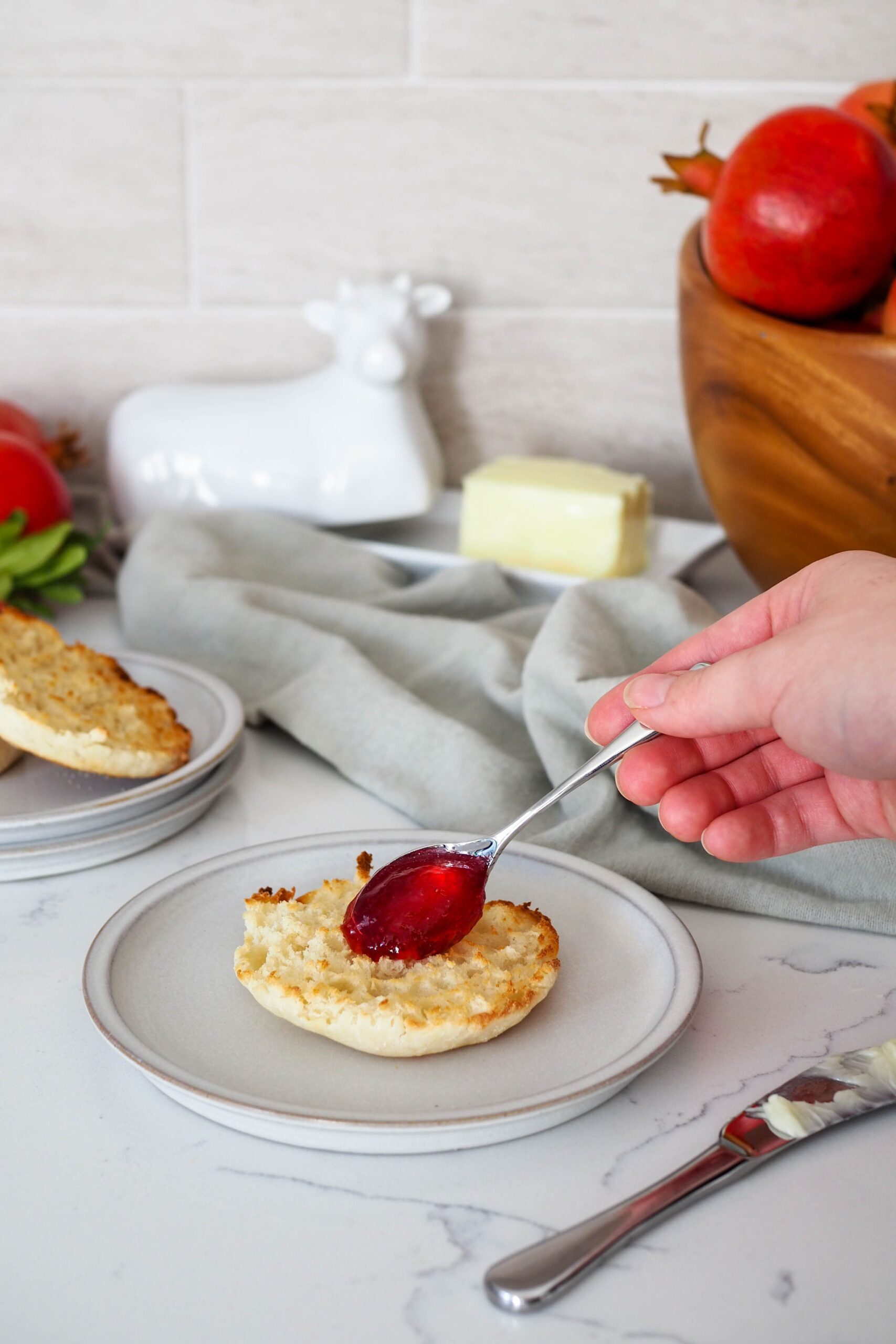
Ingredients for Pomegranate Jelly
My pomegranate jelly recipe comes together with just a few ingredients. If you don’t normally make jams or jellies, you may need to pick up pectin.
- Pomegranate juice. The main ingredient for pomegranate jelly is pomegranate juice, of course! Medium-sized pomegranates generally contain about half a cup of juice per fruit. This is a recipe that uses two pomegranates. You can also use bottled pomegranate juice if that’s more your style. (There will be hardly any dishes to do if you use juice!)
- Pectin. This will thicken up the jelly in very little time. Pectin is a carbohydrate that acts like a gelatin. It is naturally derived from plant pulp and skins, so it’s a great option for vegetarians and vegans! I like this Sure Jell pectin on Amazon.
- Lemon juice. Lemon juice works in conjunction with the pectin here, so please don’t skip it. Pectin requires a low pH to gel correctly. If your jelly has too high of a pH, it will not gel correctly. By adding lemon juice, we’re ensuring that the pectin will gel and that your jelly will set properly. Use bottled or fresh lemon juice; I haven’t noticed a difference.
- Granulated sugar. Sugar adds sweetness and helps to thicken and preserve the jam.
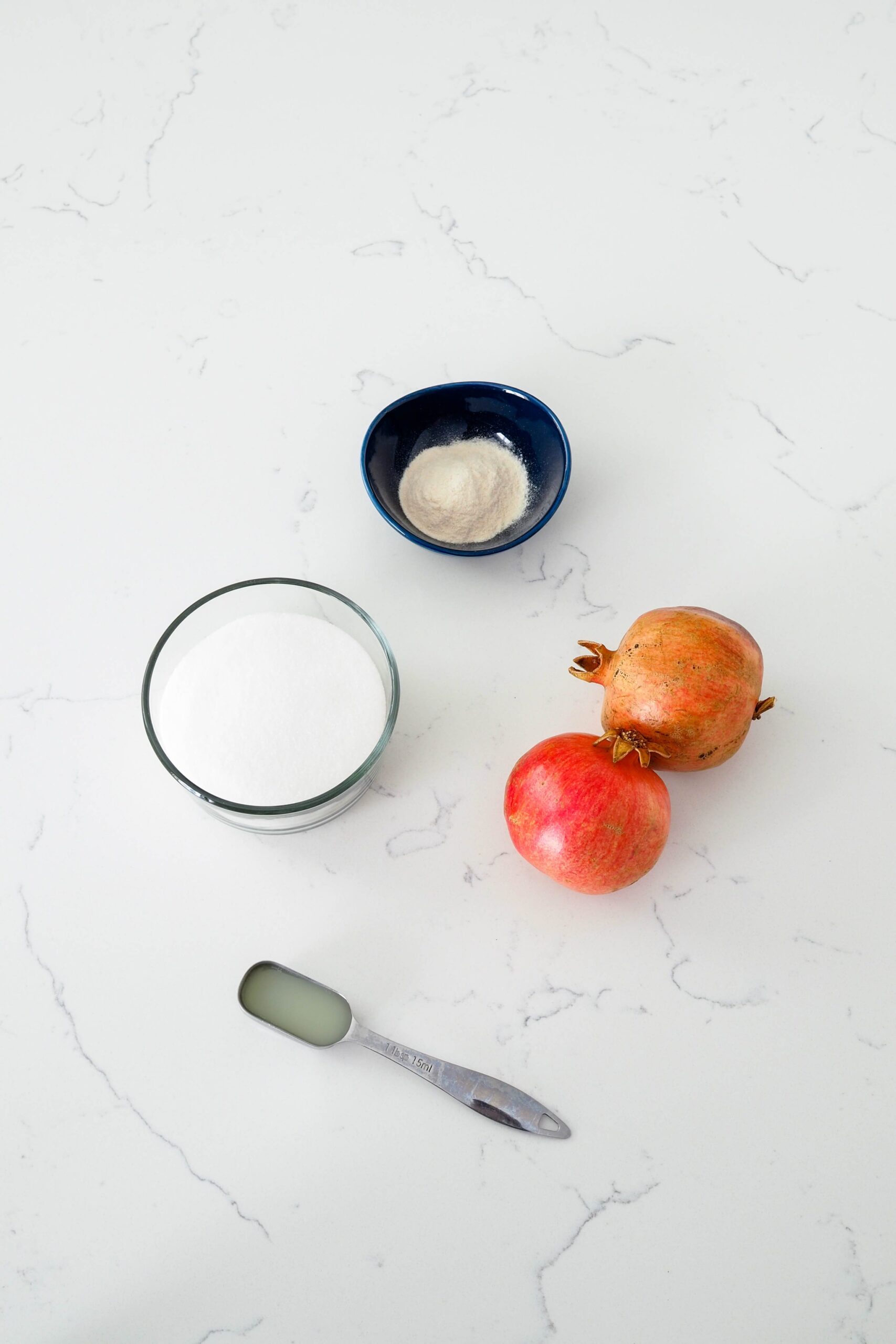
Can I Make Pomegranate Jelly from Bottled Juice?
Yes! If pomegranates aren’t in season, you can’t find them, or you don’t want to go through the effort of deseeding a pomegranate, you can use pomegranate juice from a bottle.
Can I Use Less Sugar to Make this Pomegranate Jam?
No. If you use less sugar to make this jam, it will turn out runny. Jam-making is a science that delicately balances ingredients for the proper consistency. Changing the amount of sugar by more than a quarter cup or so will significantly affect the final outcome.
Quick Tips for Prepping the Pomegranate
The hardest part about this pomegranate jelly is getting the juice out of the pomegranate without your kitchen looking like a crime scene. There are a lot of tutorials on how to do this on the Internet, and everyone has their own way of doing it.
How to Open a Pomegranate
My trick for opening pomegranates is to actually treat it like a crime scene. If you have a crime of passion with poor planning and no thought ahead, you’ll end up leaving evidence everywhere.
If, on the other hand, you are methodical, do your research, and plan ahead, you can open and deseed a pomegranate without needing to clean up your entire kitchen afterward.
Step 1: Cut off the Crown
Use a paring knife to cut off the crown of the pomegranate.
Step 2: Remove the Membrane beneath the Crown
Cut out the thick circle of membrane located directly beneath the crown of the pomegranate. Depending on the pomegranate, this can be anywhere from ¼” to ½” (6 to 13 mm).
Place the tip of your knife about ½” (13 mm) into the membrane at a 30° angle. Begin cutting the membrane out by rotate the pomegranate with the knife still inserted.
Once you’ve cut around the membrane completely, use the tip of the knife to pop the circle out.
Step 3: Score the Edges
With just the tip of your paring knife, score the edge of the pomegranate five times. Start at the top where you cut off the crown and score the whole way down.
You want to be careful to just barely score the outer flesh of the fruit. Some pomegranates have thicker skin than others. If juice starts running out, or you can feel individual arils popping, score more shallowly.
Step 4: Pull the Pomegranate Apart
With the center membrane removed and the edges scored, the pomegranate should now pull apart fairly easily.
Hold the pomegranate with your non-dominant hand. Brace the thumb pad of your dominant hand at the top of one scored section.
While holding the pomegranate firmly with your non-dominant hand, push down and away from the pomegranate to disconnect the inner membranes.
Repeat the process with each section.
Step 5: Separate the Arils from the Membrane
Your pomegranate should now be divided into five or six sections. Grab a bowl to house the pomegranate seeds (called arils).
Keep in mind: Fingernails can break the membrane on each aril. Use the pads of your fingers to gently brush the arils away from the membranes within the pomegranate.
Pick off any white pieces of membrane that fall into the bowl.
How to Juice a Pomegranate
I have tried numerous ways to juice a pomegranate: smashing all the arils in a large bowl with a spoon, squeezing the arils in between nesting bowls, roughly opening a pomegranate and just catching the juice… I’ve found the easiest way to juice a pomegranate is to blend or process the arils for a few seconds.
It does result in a few dirty dishes, but I don’t have to clean the counter or cabinets or ceiling, which I consider a huge plus.
Step 1: Place the arils in a blender or food processor
Place your pomegranate arils directly into a blender or food processor.
If you see any membrane or pith, do your best to remove it. The flesh can be bitter and make the juice a bit bitter by association.
Step 2: Blend
Pulse the arils in your blender or food processor until the juice is really liquidy. This should only take a few seconds in total, as the arils are easy to break open. I’m sure you noticed that while opening the pomegranate.
Step 3: Strain
Pour the blended pomegranate juice over a fine mesh strainer resting on top of a bowl. This will remove the seeds and any small pieces of membrane, leaving you with perfectly smooth pomegranate juice.
Then, use a spoon or whisk to press the last bits of juice out of the arils.
There you have it! Your pomegranate juice is ready to use in this jam recipe. (You can also just drink it—I won’t blame you one bit!)
Quick Tips for Making the Pomegranate Jam
- This recipe can be made using just one utensil if you use a whisk. (That goes for straining out the juice and stirring the jam over the stove.)
- Pectin can get clumpy (it is a gel, after all). It’s best to mix the pectin in with the pomegranate and lemon juice before you’ve applied any heat.
- Make sure you cook the pomegranate jelly for two minutes after the sugar has started to boil. Some of the water needs to cook off in order for the jam to properly set.
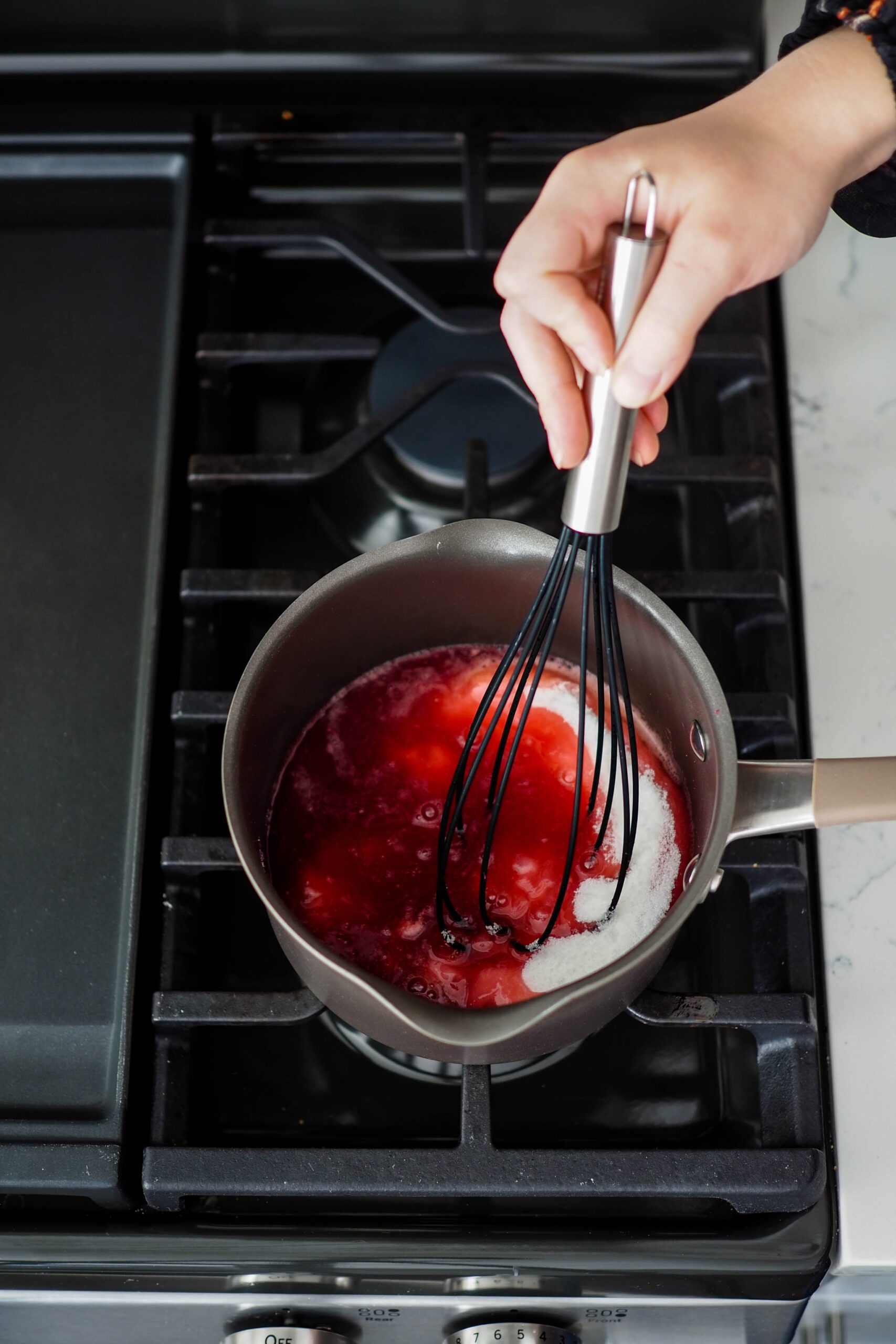
What to Use Pomegranate Jelly In
Pomegranate jelly is just as versatile as strawberry or grape jam. Its unexpected tartness makes it a sweet surprise in whatever dish you put it in.
My favorite use for pomegranate jelly is in this white chocolate pomegranate layer cake. Tender white cake, tart pomegranate jelly, and sweet white chocolate buttercream are all a match made in heaven.
Try it as a filling for macarons—simply swap out the lemon curd for pomegranate jam in this robin’s egg macaron recipe.
Change my savory pesto Parmesan star bread to a sweet pomegranate star bread by layering pomegranate jam between the dough rounds instead of pesto and Parmesan cheese.
You can even skip the caramel in my mini caramel apple pies and add a teaspoon of pomegranate jam instead to make them pomegranate apple pies!
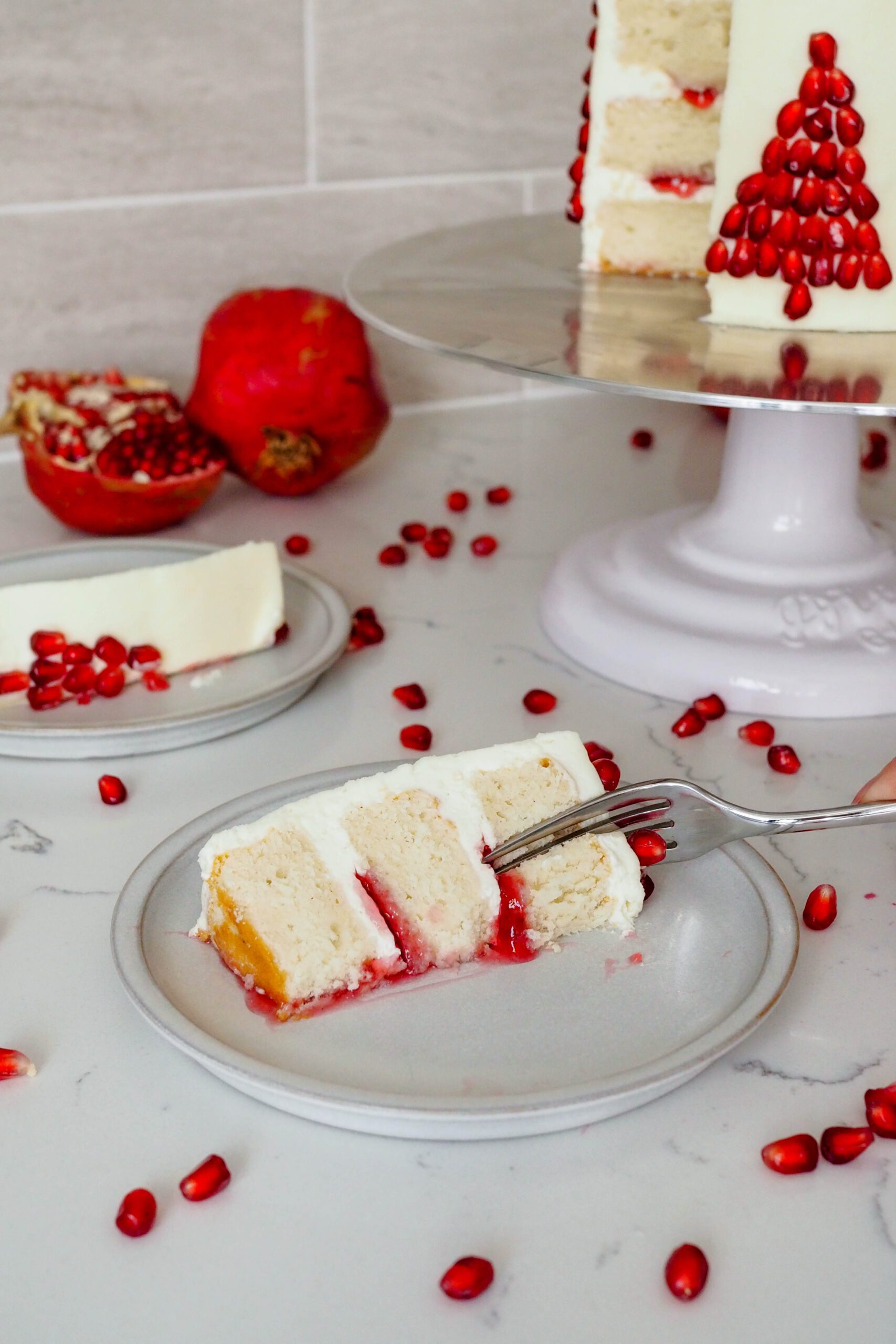
Dish Cleanup: Not Too Bad
I rate my recipe cleanups on a scale of 1 to 5. 1 is only a handful of dishes, and 5 is everything including the kitchen sink.
My pomegranate jelly recipe, when made with fresh pomegranates, has a cleanup rating of a 2. I used a cutting board, knife, blender, and fine mesh strainer to get all of my pomegranate juice.
When made with bottled pomegranate juice, this recipe has a cleanup rating of a 1. You will only have to wash half of the dishes pictured if you simply poured your pomegranate juice into a measuring cup.
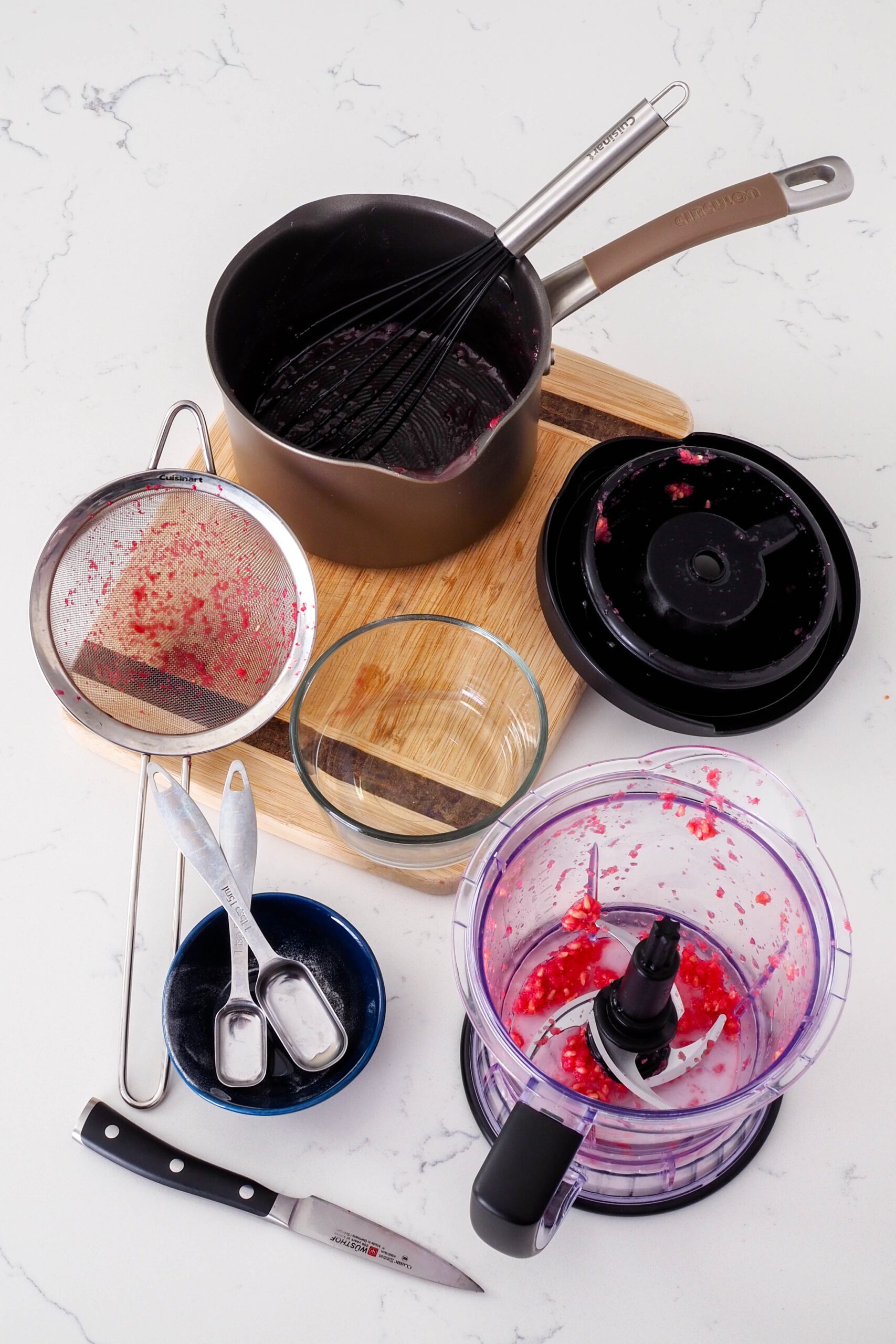
Pomegranate Jelly Recipe
Small Batch Pomegranate Jelly
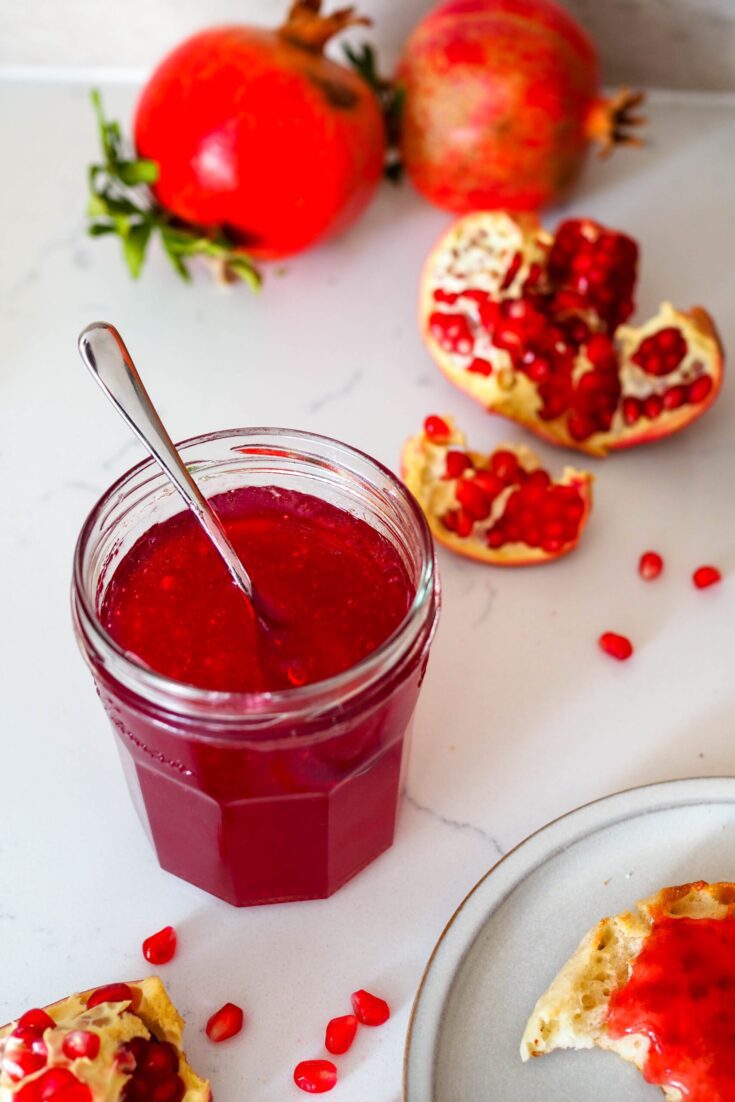
Enjoy pomegranates year-round with this tart pomegranate jelly, made from fresh pomegranates or bottled juice. This recipe can easily be doubled or tripled.
Ingredients
- 1 cup pomegranate juice, from about 2 pomegranates or bottled (240 ml)
- 1 Tablespoon lemon juice
- 4 teaspoons pectin (12g)
- 1 ¼ cups granulated sugar (250g)
Instructions
Making the Pomegranate Jelly
- In a medium pot over medium heat, stir together pomegranate juice, lemon juice, and pectin. Bring the mixture to a boil.
- Add the sugar, and stir to dissolve. Let the mixture return to a boil for two minutes, stirring occasionally to prevent the mixture from boiling over.
- Remove from heat and let stand for five minutes to begin cooling.
Storing the Pomegranate Jelly
- For refrigerator jam (easy!): Pour into jars, seal, and refrigerate. The pomegranate jelly will thicken as it cools; for best results, allow the jelly to set overnight.
- For processed, shelf-stable jam: Pour into sterilized jars, leaving about a ¼" at the top. Then wipe the rims clean and screw on sterilized lids. Process in a boiling water bath for 10 minutes,* then cool at room temperature. Verify that the lid is concave, then store in a cool, dark place for up to a year before consuming.
Notes
*Altitudes over 1000 ft may require a longer processing time. See the USDA's guide to canning for more details.
Once opened, a jar of pomegranate jelly will last for up to three months in the refrigerator.
You may freeze unopened jars of this pomegranate jelly for up to three months.
Nutrition Information:
Yield:
24Serving Size:
1Amount Per Serving: Calories: 67Total Fat: 0gSaturated Fat: 0gTrans Fat: 0gUnsaturated Fat: 0gCholesterol: 0mgSodium: 3mgCarbohydrates: 17gFiber: 1gSugar: 15gProtein: 0g
The nutrition facts are estimated and may vary based on specific ingredients used.
Thanks for trying out my pomegranate jelly recipe! Please consider rating this recipe so others find it, too.
I’d love to see how your recipe turns out: Take a photo and tag me on Instagram @floralapronblog to share with me, or use the hashtag #floralapronbakes.
This post contains affiliate links. If you click through and make a purchase, I may receive a small commission at no cost to you. Thank you for helping to support The Floral Apron!

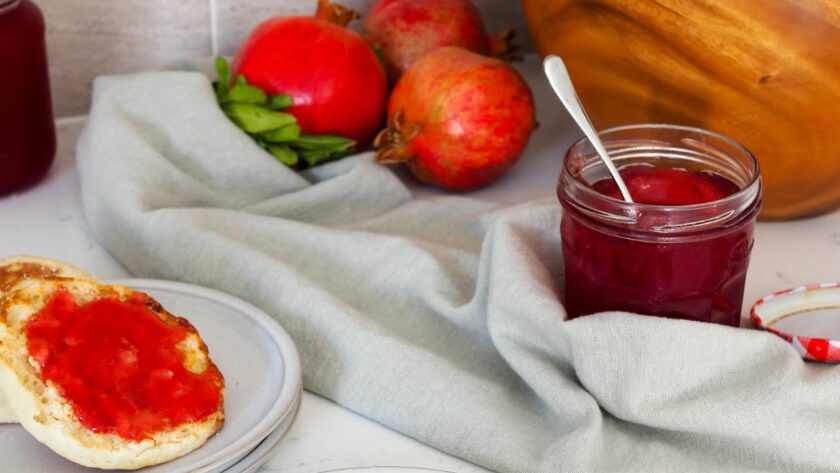
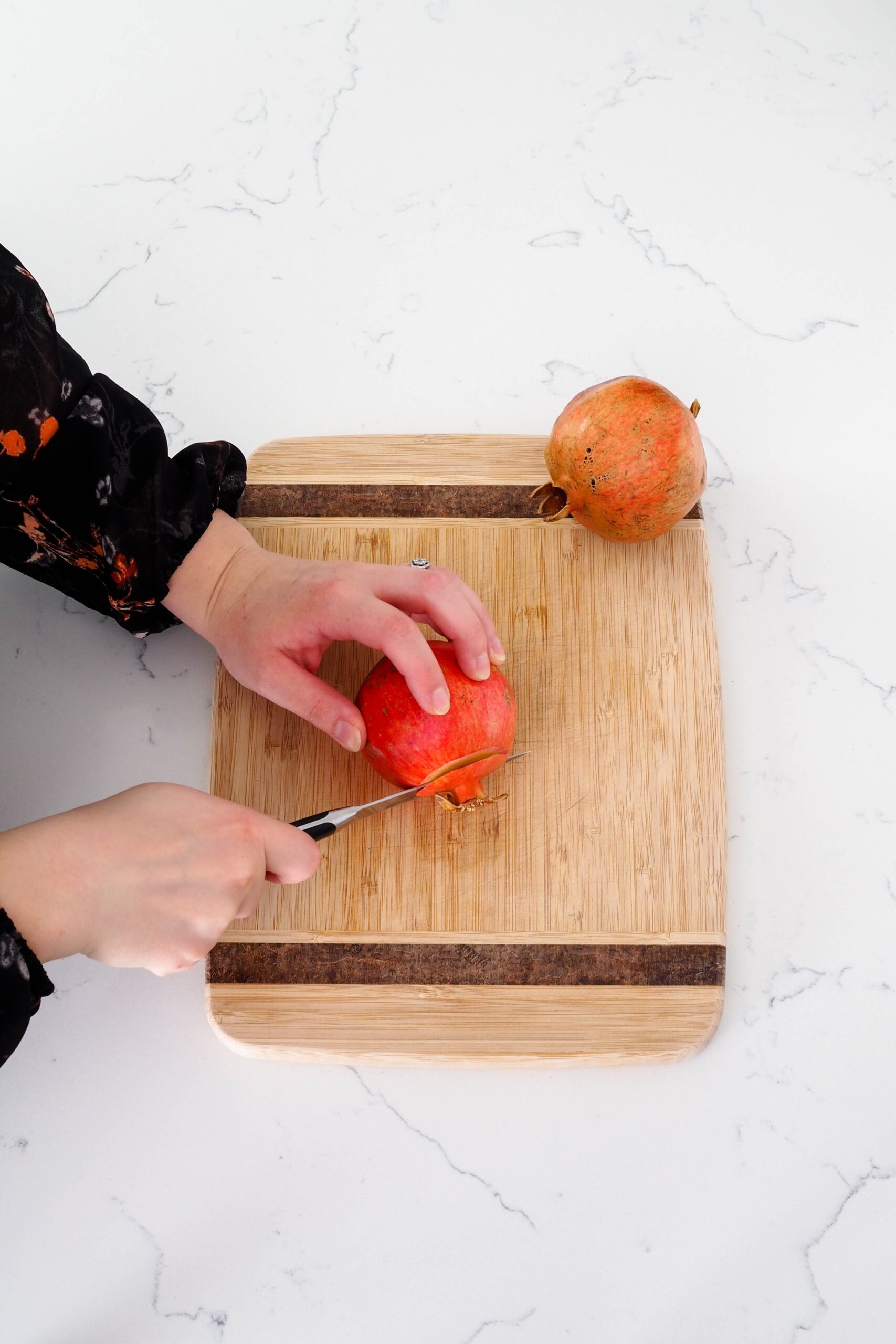
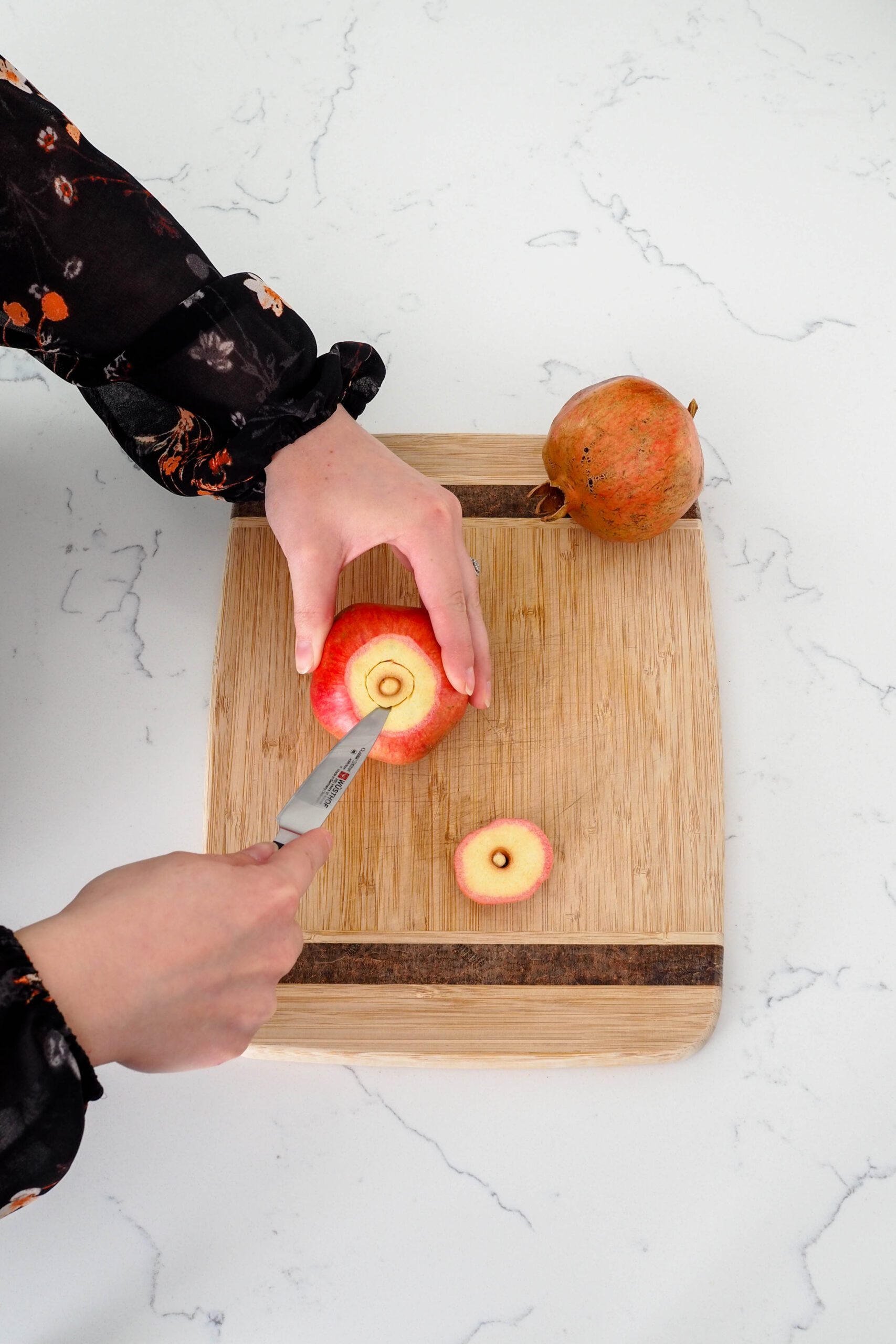

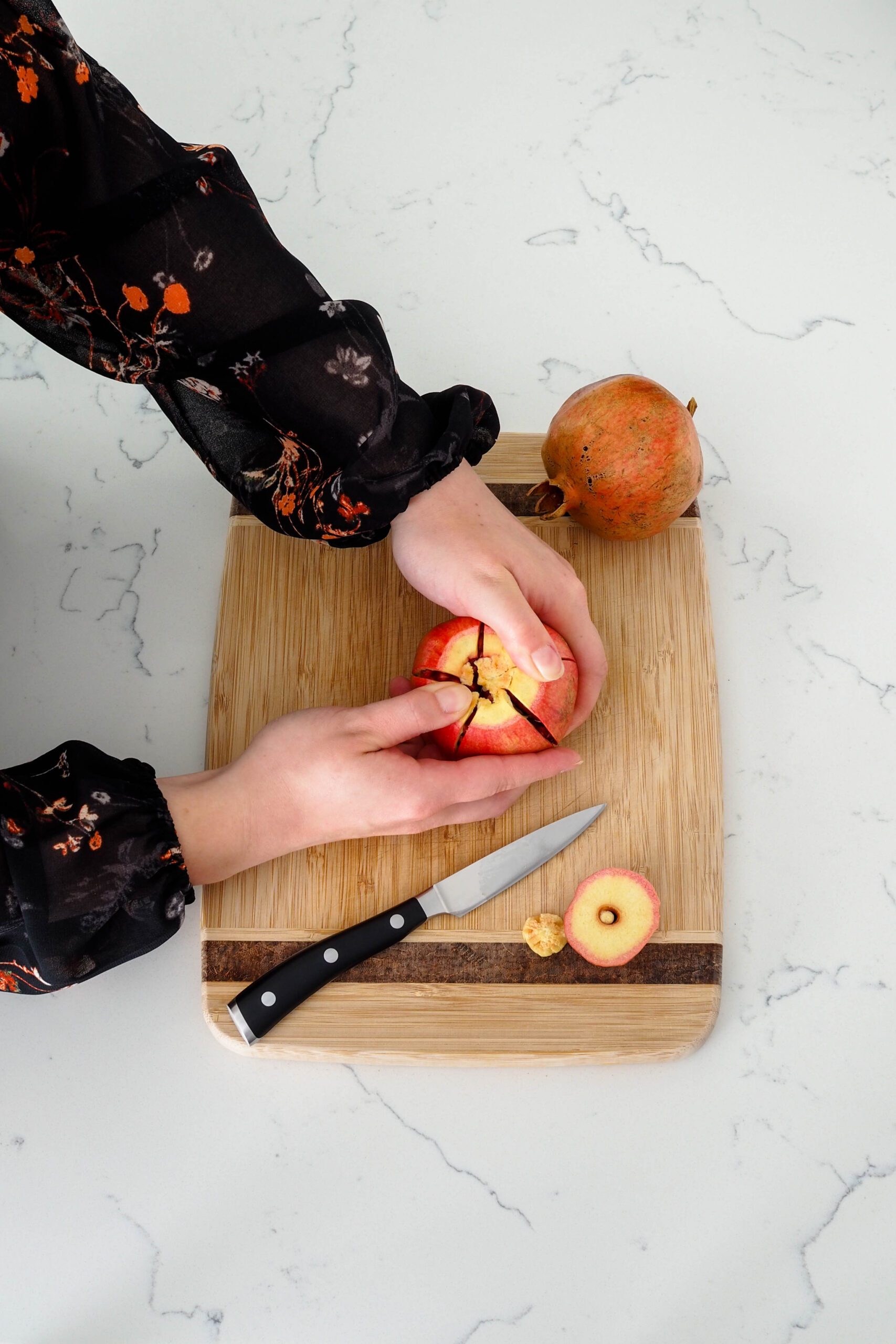
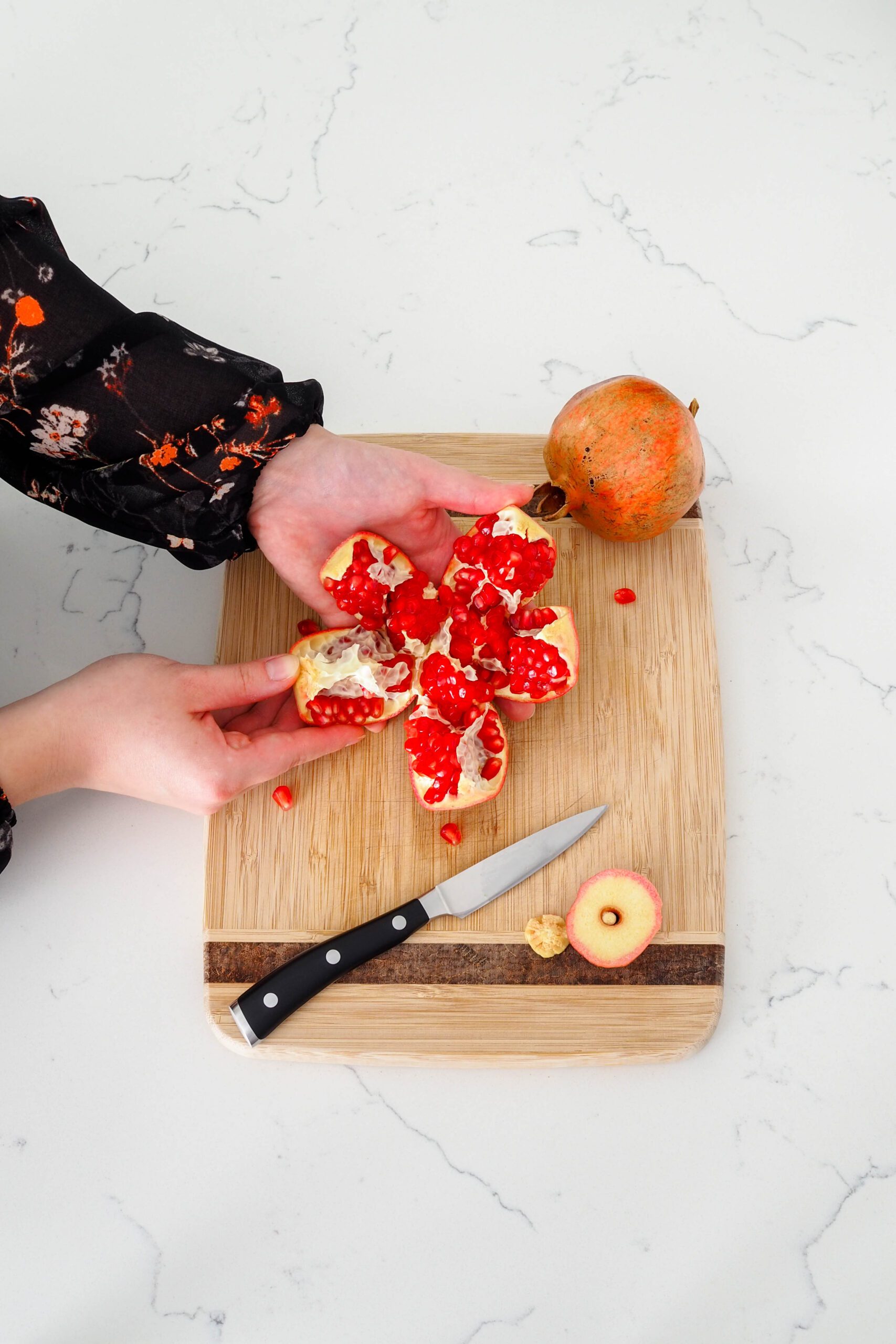
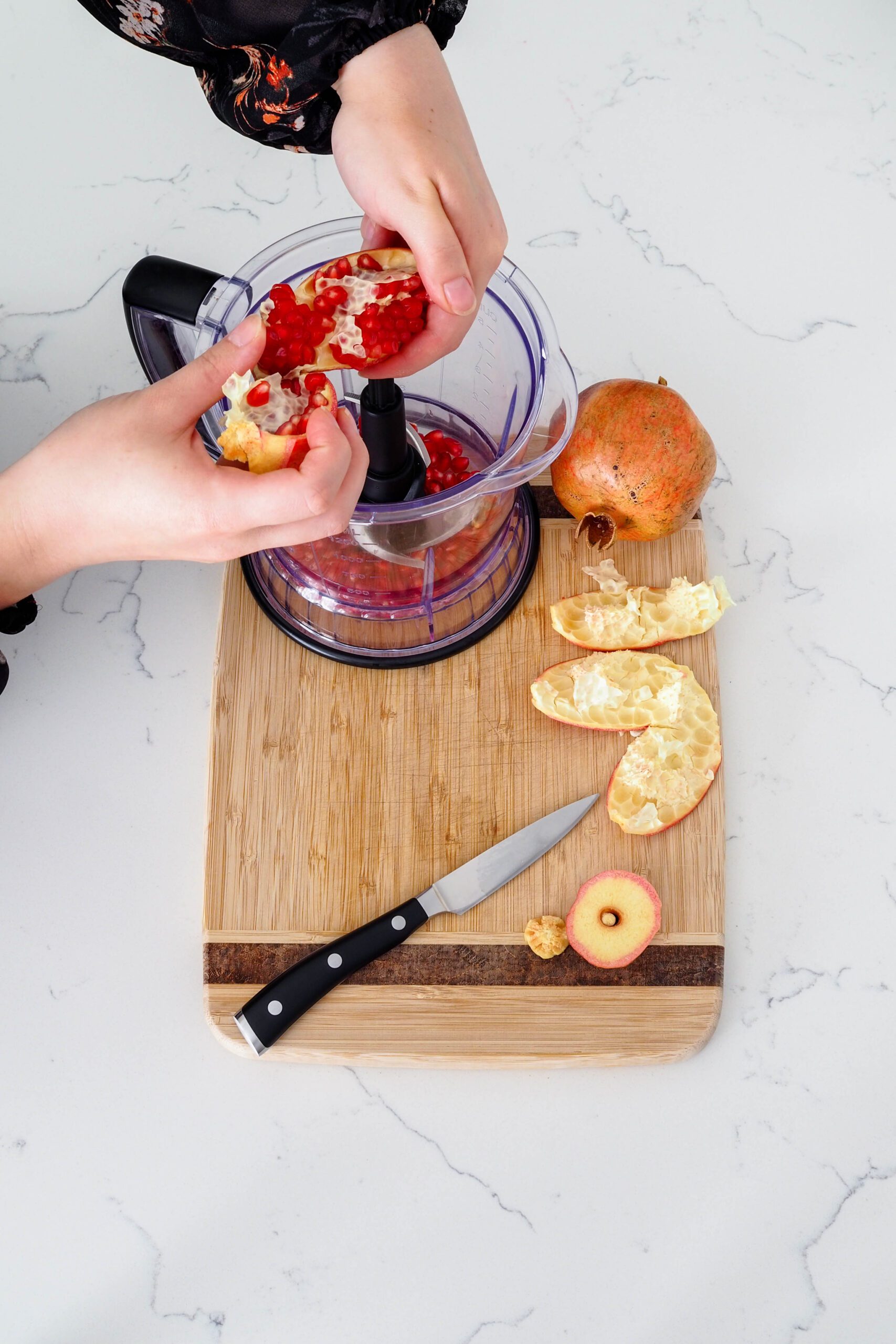
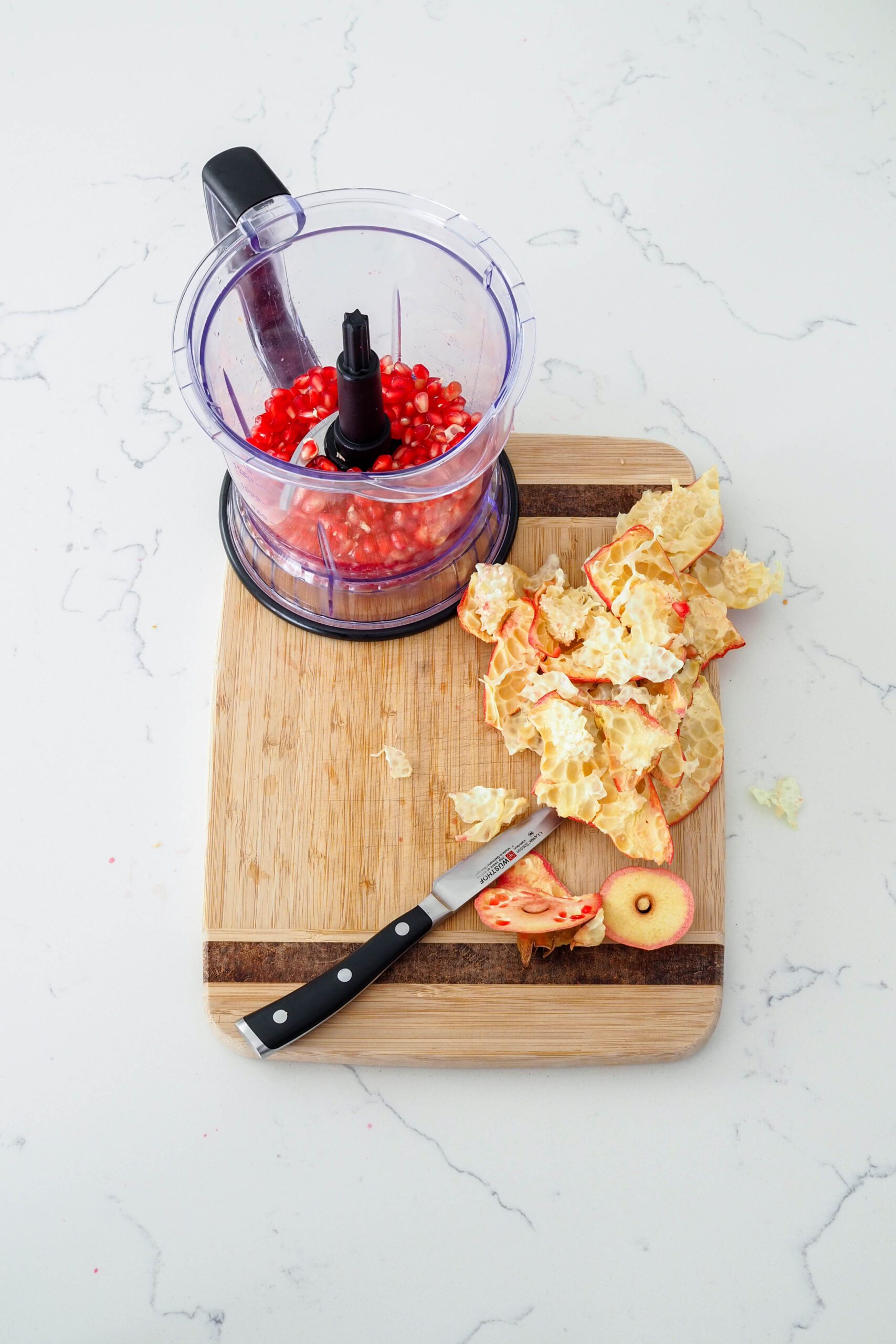


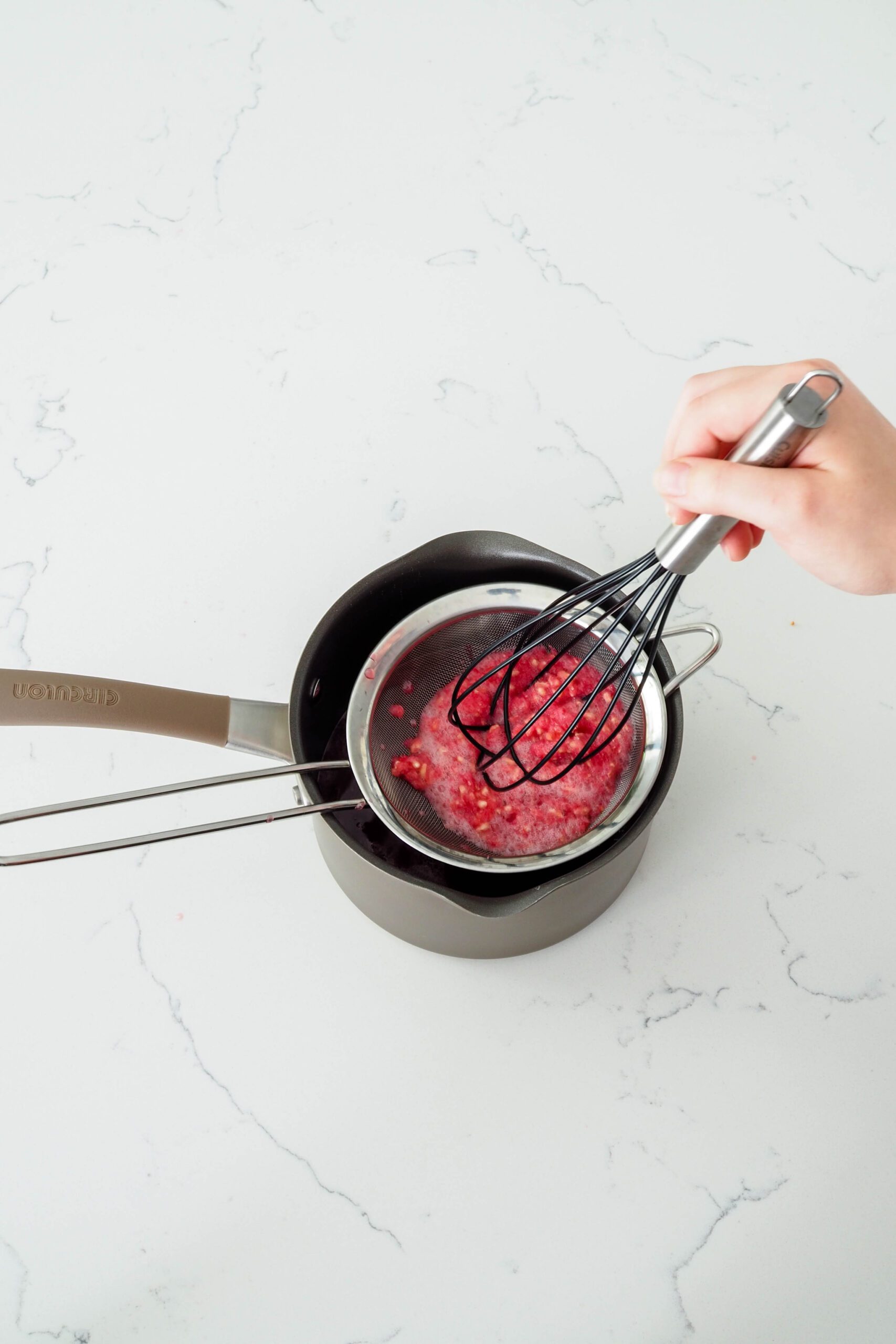
Very pretty and tasty !! But this makes pomegranate syrup, not pomegranate jelly.
I ended up using the entire 1.75 ounce package of Sure-Jell pectin to achieve a spreadable consistency.
Hi Marian,
I would love to hear more! Generally, a whole box of pectin gels four cups of fruit juice. For a recipe that only uses one cup of juice (and a Tablespoon of lemon juice to ensure the correct pH), we’d use a quarter of the box, which would be about four teaspoons or 12 grams. The jelly will not set until it’s fully cooled—perhaps you tried spreading it too quickly while it was still warm?
I have a short video showing the consistency of the jam as it’s poured into jars here if you want to compare it to yours: https://www.youtube.com/shorts/_o9kI7d5CLM
If you love pomegranate anything, you’re in the right place. This jam has become my new FAVORITE. Perfect consistency, perfect flavor and just the right amount that you can always make more of if you need. It’s WONDERFUL!! I love it so much and so does my 3 year old daughter. Thank you for this recipe!!!
Thank you so much for your kind words, Lyric! So glad you and your family loved this recipe 🙂